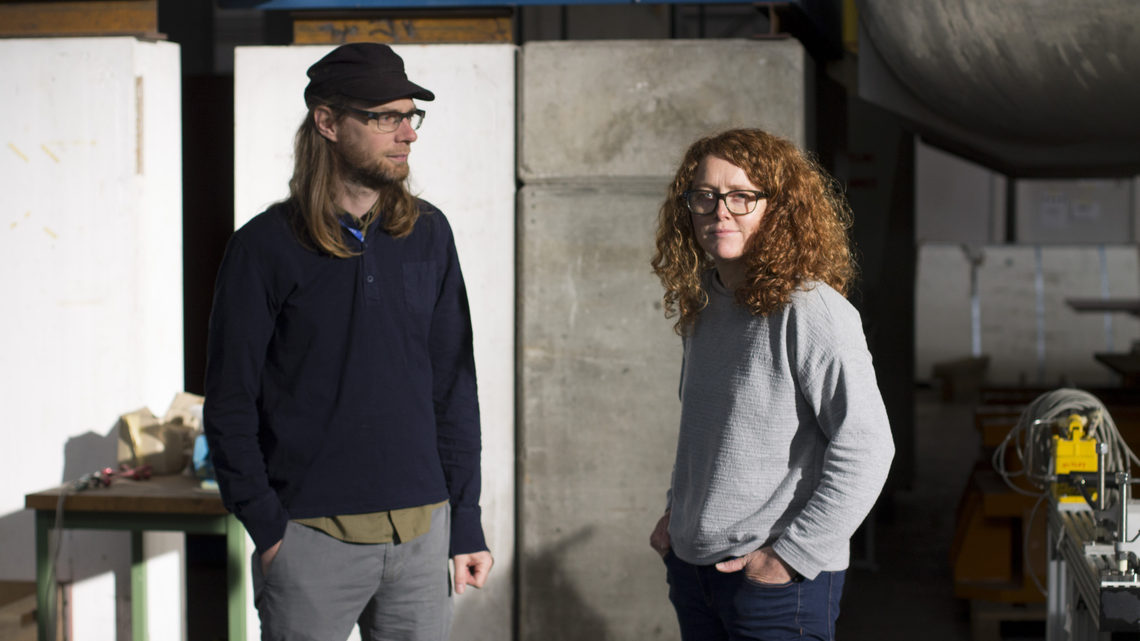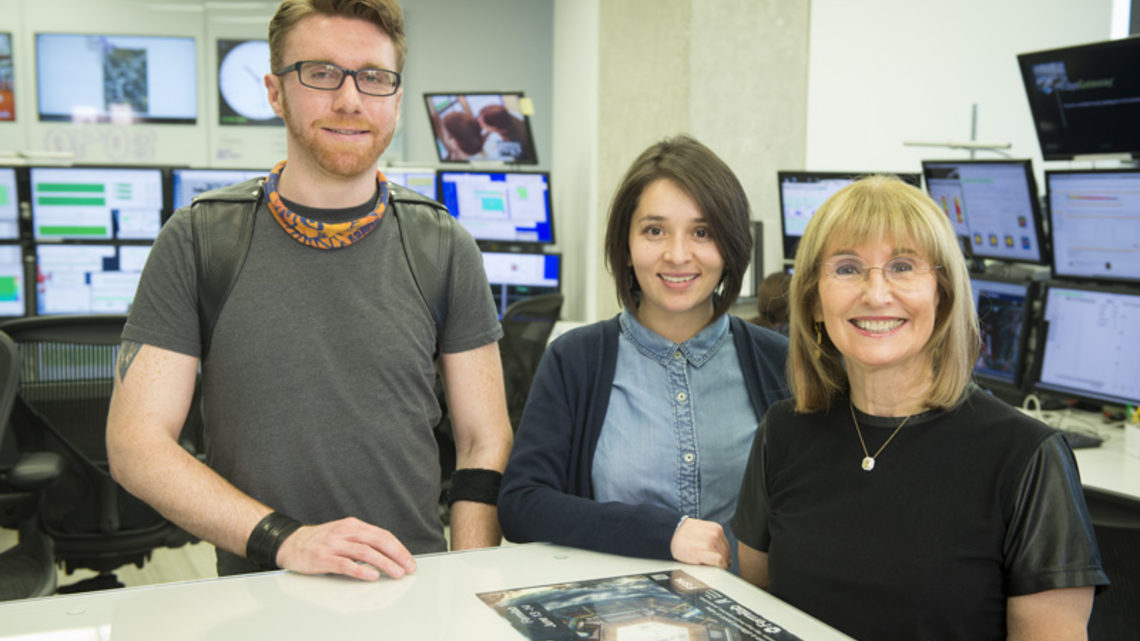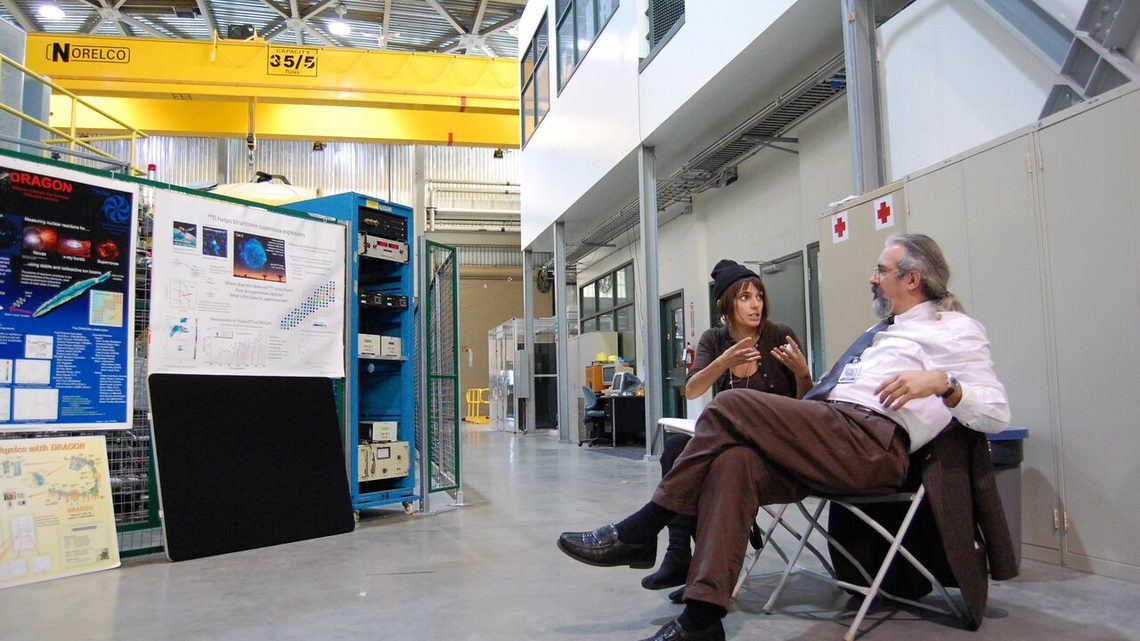A golden cage protesting Donald Trump’s border-control measures and an “obese house” in Vienna are among some of the installations created in 2017. Continuing our review of 2017, editorial assistant Natashah Hitti selects her top 10.
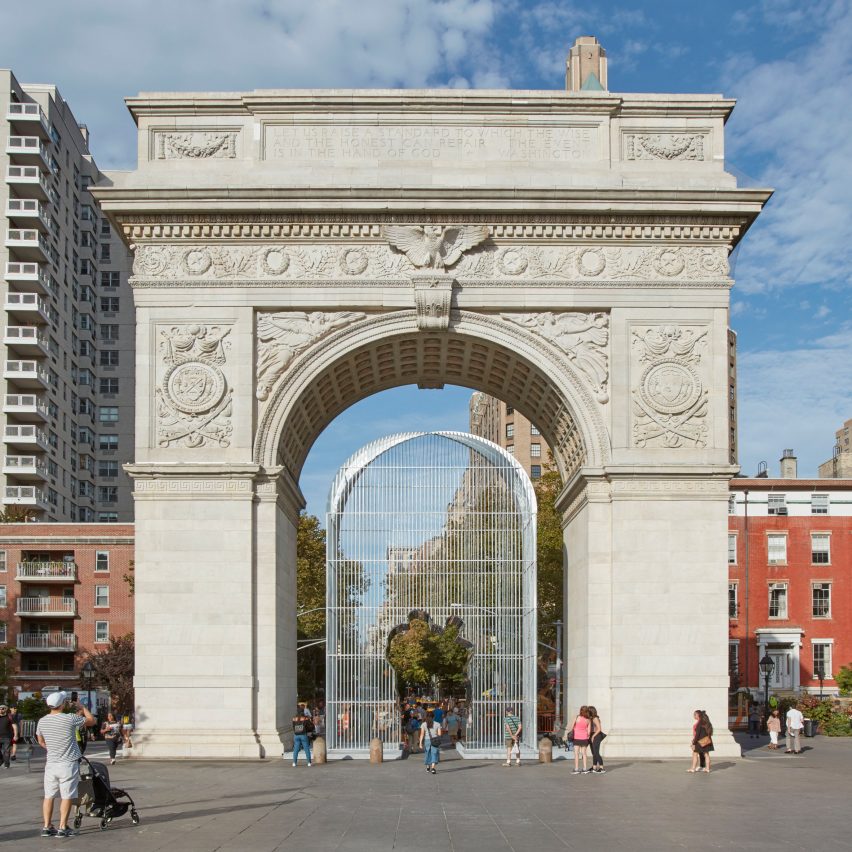
Good Fences Make Good Neighbors by Ai Weiwei
In a campaign against Donald Trump’s border-control measures, Chinese artist and human-rights activist Ai Weiwei built three monumental structures from metal fencing, to resemble security fences.
All located in New York, the structures include a giant golden cage in Central Park, and an enclosure that slots inside the Washington Square Arch.
Find out more about Ai Weiwei’s installations ›
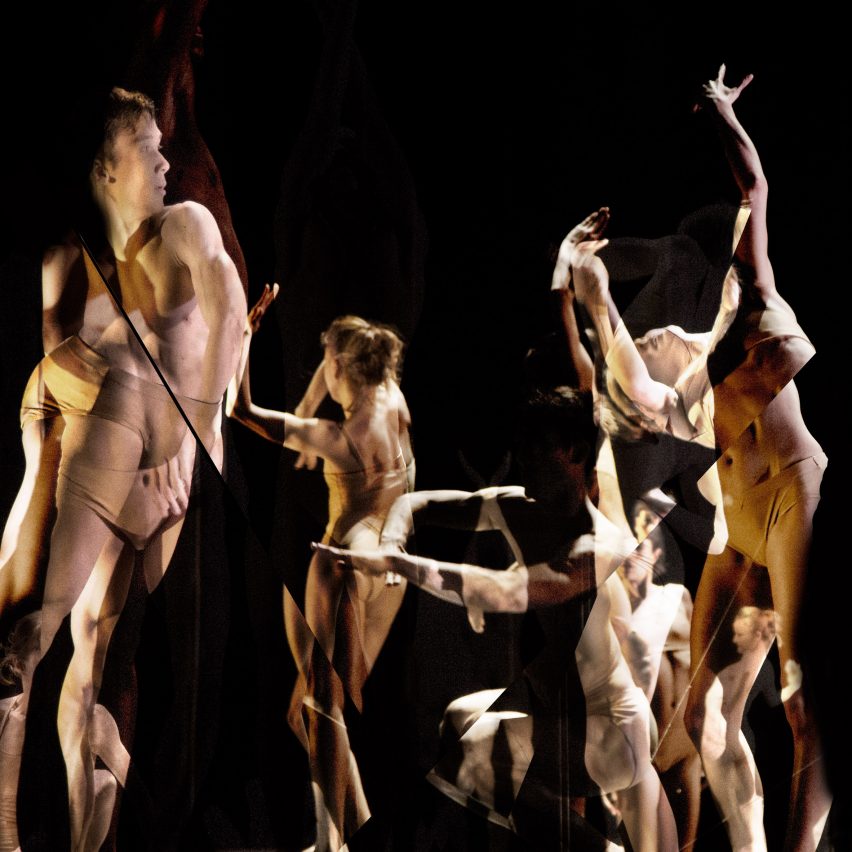
Tree of Codes set design by Olafur Eliasson
Icelandic artist Olafur Eliasson used a combination of mirrors and coloured screens to create illusionistic, abstract scenes for Wayne McGregor‘s Tree of Codes ballet, which was on show at London theatre Sadler’s Wells in March.
The performance is based on, and named after, an artwork in the form of a book by Jonathan Safran Foer, which was created by cutting apart Bruno Schulz’s book The Street of Crocodiles to form a new narrative.
Find out more about Olafur Eliasson’s Tree of Codes set design ›
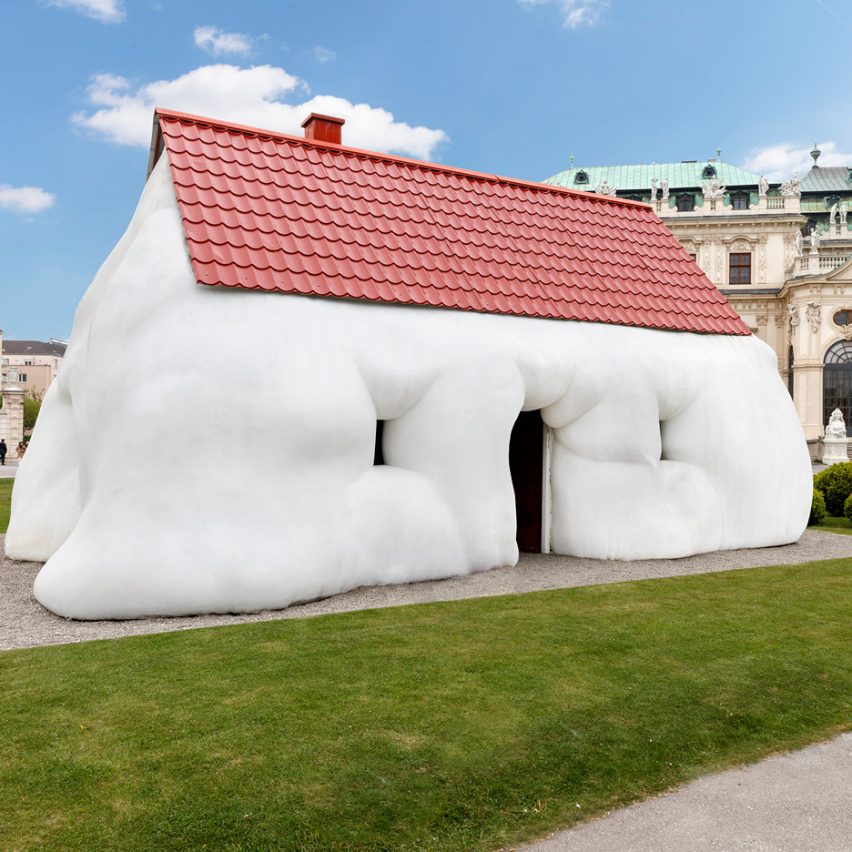
Earlier this year, Austrian sculptor Erwin Wurm installed his “obese house” in the grounds of Vienna’s 18th-century Belvedere palace.
Similar in form to a conventional suburban house, the seven-metre high sculpture was created as a commentary on middle-class consumer culture. The house’s walls appeared to have swollen out, giving the impression of fatty flesh rather than an architectural structure.
Find out more about Erwin Wurm’s Fat House ›
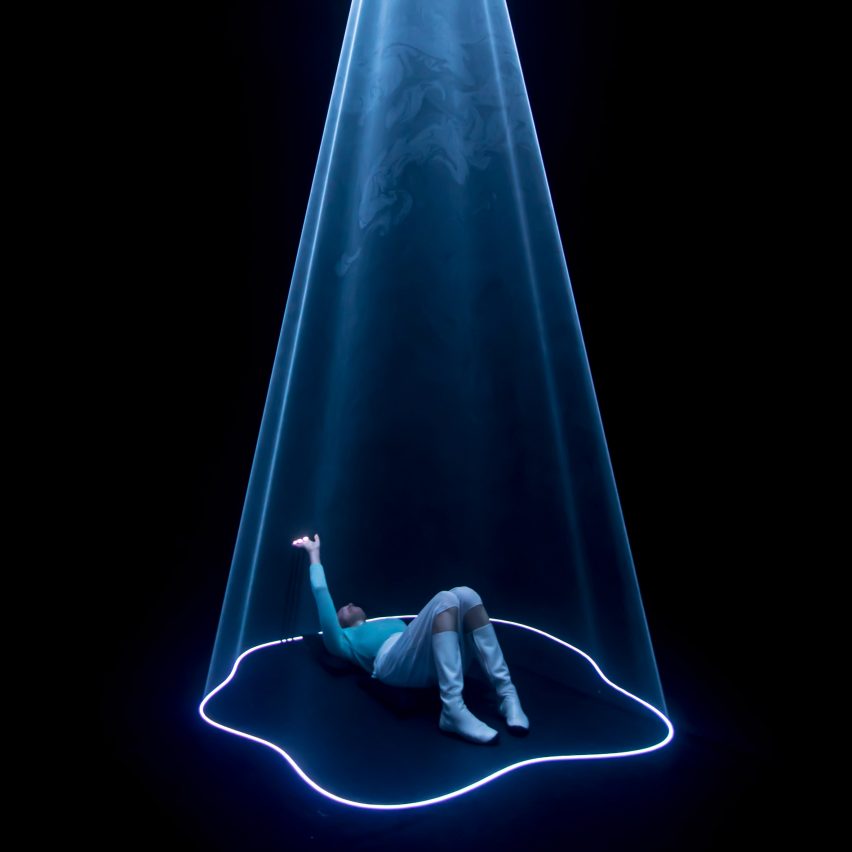
Aura installation by Studio Nick Verstand
Shown as part of this year’s Dutch Design Week, this audiovisual installation by Studio Nick Verstand, in cooperation with VPRO Medialab, reinterpreted people’s emotions as pulsing light compositions.
Equipped with multiple biosensors that register brainwaves, heart-rate variability, and galvanic skin response, visitors sat or laid down on the floor as a musical composition played out in the background, triggering emotional responses. The visitors’ emotional “data” was then analysed and metamorphosed into different forms, colours and intensities of light that were beamed down onto them from above.
Find out more about Studio Nick Verstand’s Aura installation ›
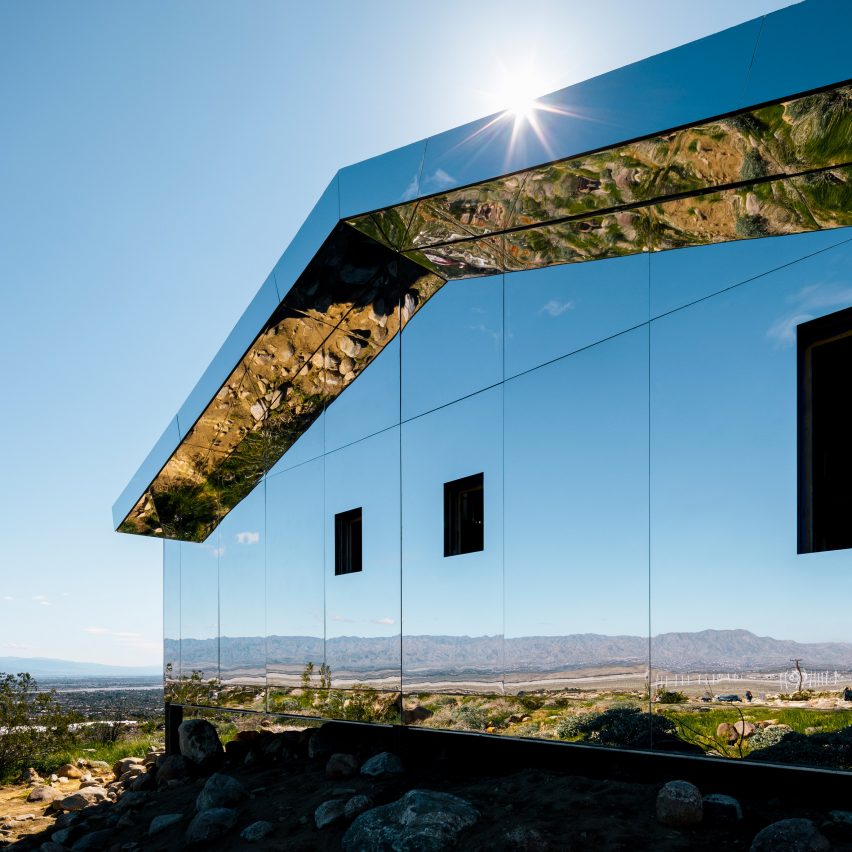
American artist Doug Aitken built this house-shaped structure clad in mirrors, which reflects the surrounding desert landscape of the Coachella Valley.
The Mirage installation was modelled on a ranch-style suburban American house, and also found inspiration from the modernist ideas of architect Frank Lloyd Wright.
Find out more about Doug Aitken’s Mirage installation ›
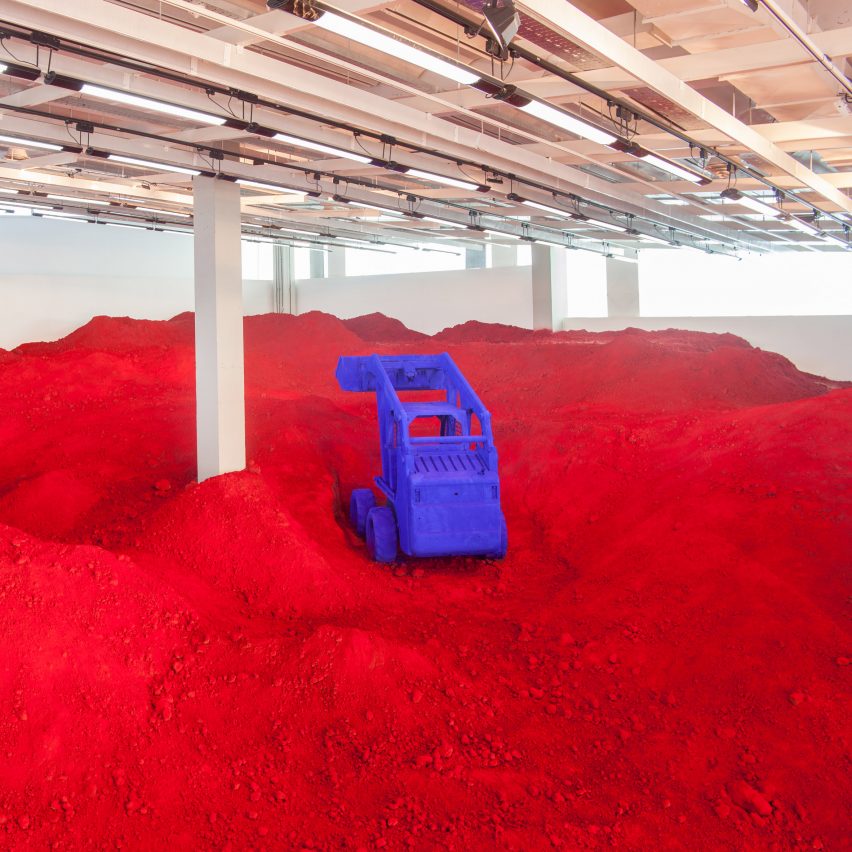
British sculptor Anish Kapoor filled a room with over 100 tonnes of earth spread across the floor before spraying it with a bright red pigment, to represent the unseen borders that separate the modern world.
The installation, titled Destierro, was on show at the Parque de la Memoria in Argentina, which was created as a memorial to the victims of the military regime that ruled Argentina from 1976 to 1983.
Find out more about Anish Kapoor’s Destierro installation ›
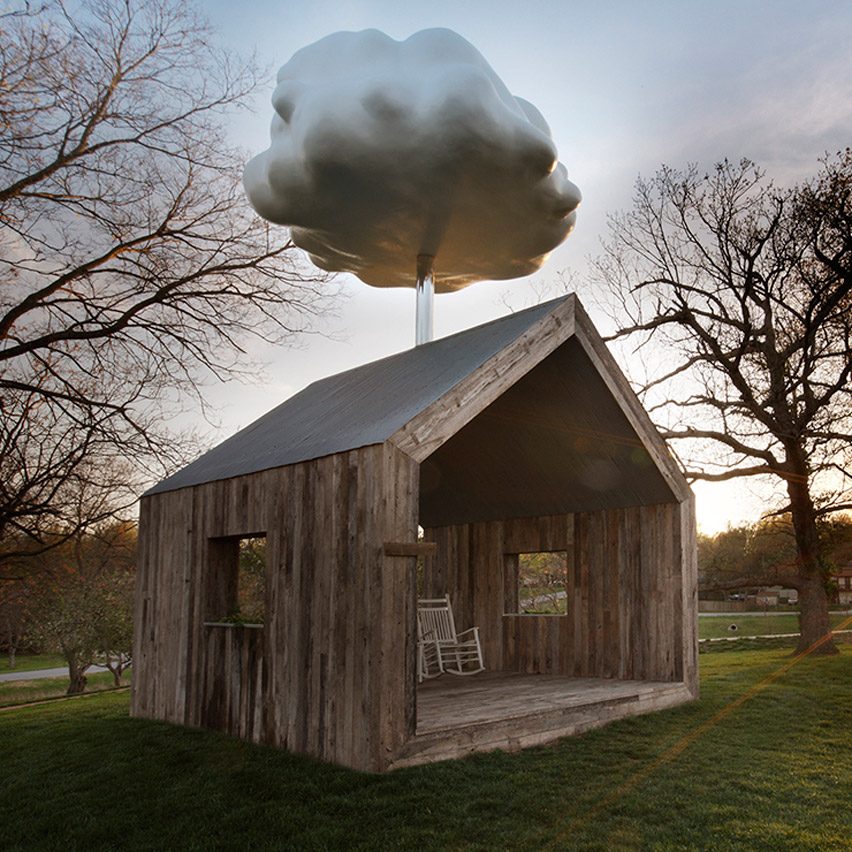
Cloud House by Matthew Mazzotta
This shed-like pavilion by artist Matthew Mazzotta features a cloud-shaped element over its corrugated roof, which rains whenever someone sits inside.
Once a person is sat on one of the rocking chairs in the shelter, pressure sensors in the floor are activated, causing pumps to transport water from an underground storage tank up into the cloud, which releases the liquid through tiny holes to simulate rain. Those inside can hear the “warm pleasant sound” of the drops hitting the tin roof, and watch the water permeate through the window lintels to feed plants growing in the sills.
Find out more about Matthew Mazzotta’s Cloud House ›
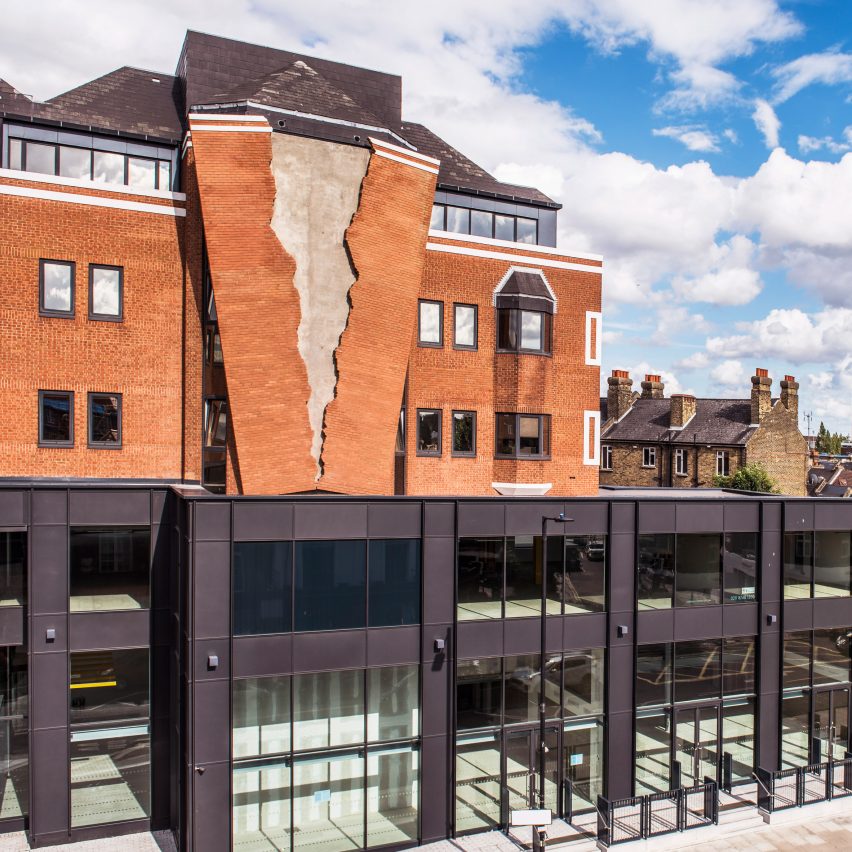
Six Pins and a Half Dozen Needles by Alex Chinneck
British artist Alex Chinneck created this “cartoon-like” installation from 4,000 bricks, intended to look like a page ripped from a book.
Titled Six Pins and a Half Dozen Needles, the sculpture was designed to appear as if part of the building’s facade had cracked in two. The installation was situated on the site of Assembly London – a campus of offices, retail units and restaurants situated in Hammersmith.
Find out more about Alex Chinneck’s installation ›
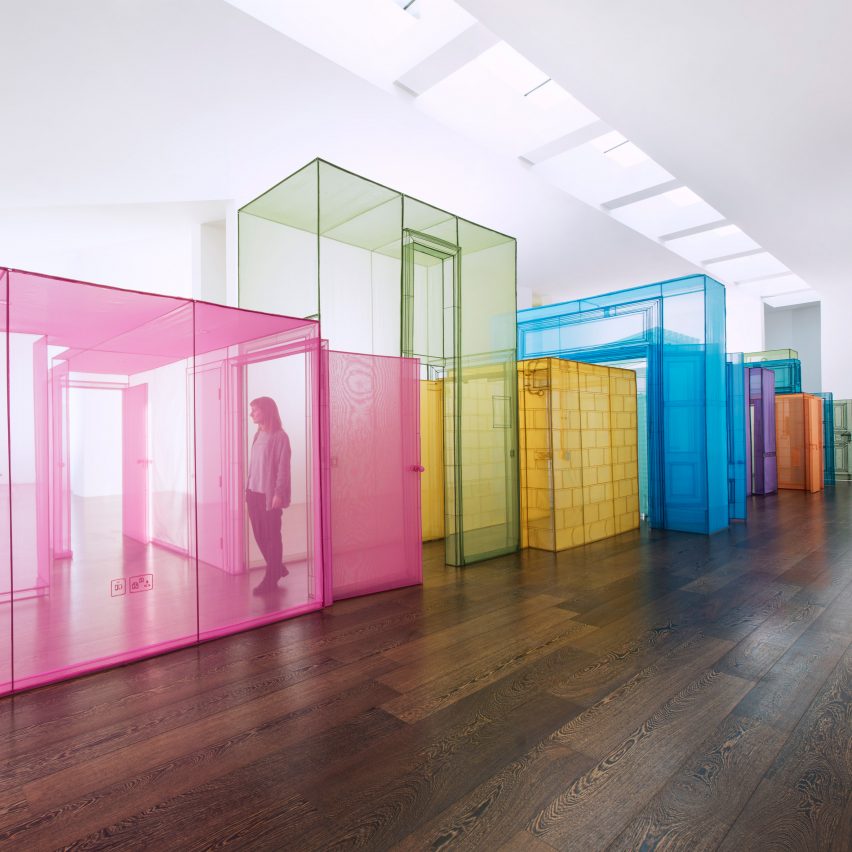
These colourful translucent doorway structures represent all the different places that Korean artist Do Ho Suh has lived and worked, in a bid to explore ideas about identity and migration.
Displayed at London’s Victoria Miro Gallery, the Passage/s installation gave physical form to Suh’s idea of life as a journey, “with no fixed beginning or destination.”
Find out more about Do Ho Suh’s Passage/s installation ›
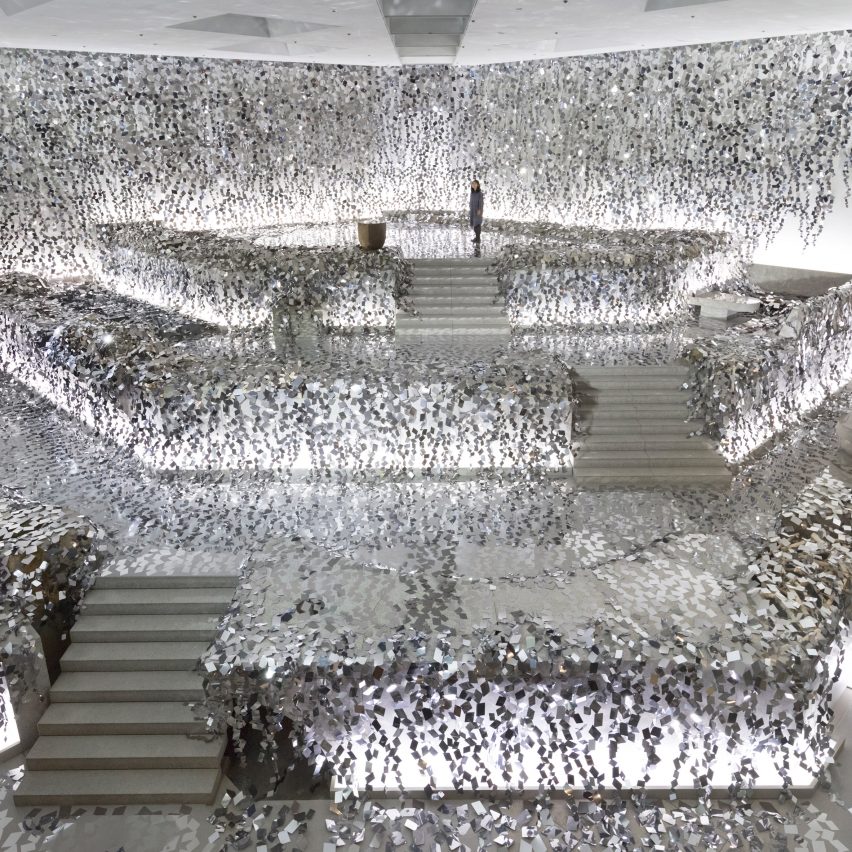
Japanese studio Nendo used over 40,000 shards of polished steel to form this installation spread across a Japanese flower-arranging school, designed to emulate an “ivy of mirrors.”
Featuring in an exhibition titled Hana So (Fireworks), the mirrored landscape reflected the flower arrangements placed around the space, resulting in kaleidoscopic visual effects.
Find out more about Nendo’s kaleidoscopic installation ›
Natashah Hitti | Leave a comment
https://www.dezeen.com/2017/12/11/top-10-installations-review-2017-design/


